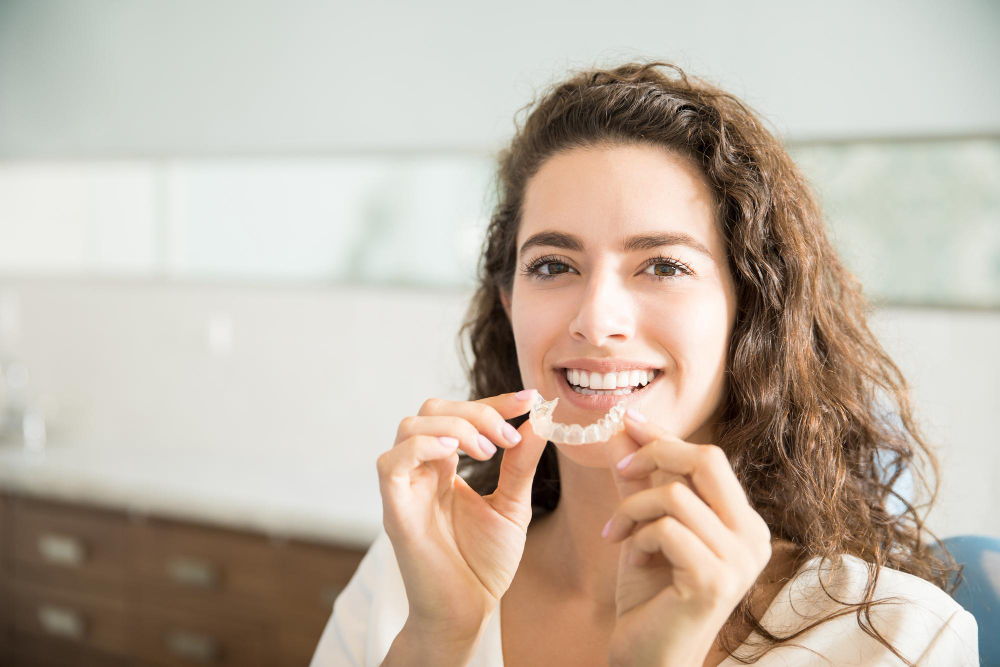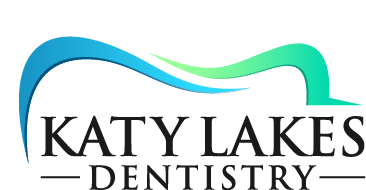Braces vs. Invisalign: Which Orthodontic Treatment Is Right for You?
If you’ve been considering orthodontic treatment to achieve a straighter smile, you’re likely weighing your options between traditional braces and Invisalign. Both of these popular treatments offer effective solutions for correcting misaligned teeth, but they come with different pros and cons. At Katy Lakes Dentistry, we offer both braces and Invisalign, and our goal is to help you choose the treatment that best suits your needs, lifestyle, and budget.
In this blog post, we’ll break down the key differences between braces and Invisalign, so you can make an informed decision on which orthodontic treatment is right for you.

Understanding Braces: How They Work
Traditional braces consist of metal brackets that are bonded to each tooth and connected by a wire. This wire is periodically tightened to apply pressure, gradually shifting the teeth into the correct position. Braces have been used for decades and are a tried-and-true method of addressing a wide range of orthodontic issues.
Braces are highly effective at treating complex dental problems, including:
- Severe misalignment
- Overbites, underbites, and crossbites
- Gaps between teeth
- Crowding
Today’s braces come in various styles, including metal braces, ceramic braces (which are tooth-colored for a more subtle appearance), and lingual braces, which are attached to the back of the teeth for a hidden look.
Understanding Invisalign: How It Works
Invisalign is a newer orthodontic treatment that uses a series of clear, removable aligners to gradually straighten teeth. These aligners are custom-made for each patient and are typically replaced every two weeks to continue shifting the teeth into the desired position.
Invisalign is an appealing option for patients who want a more discreet and flexible treatment. It’s ideal for correcting:
- Mild to moderate alignment issues
- Gaps between teeth
- Slight crowding
- Minor bite issues
Because the aligners are transparent, Invisalign is a popular choice among adults and teens who want to avoid the appearance of metal braces.

Braces vs. Invisalign: The Key Differences
While both braces and Invisalign work toward the same goal—achieving a straighter smile—the experience of each treatment is quite different. Here’s how they compare in various aspects:
1. Aesthetics
- Braces: Traditional metal braces are visible, making them a less discreet option. However, ceramic braces and lingual braces offer more subtle alternatives for those concerned about appearance.
- Invisalign: Invisalign aligners are made of clear, smooth plastic, making them nearly invisible when worn. This makes Invisalign an attractive option for patients who want to straighten their teeth without drawing attention to their orthodontic treatment.
2. Comfort
- Braces: Braces can cause some discomfort, especially after adjustments. The brackets and wires may irritate the inside of your mouth, and there may be pressure or soreness after tightening.
- Invisalign: Invisalign aligners are smooth and custom-fitted to your teeth, so there are no wires or brackets to cause irritation. While you may feel slight discomfort when switching to a new set of aligners, it’s generally less painful than traditional braces.
3. Removability
- Braces: Braces are fixed to your teeth for the duration of your treatment, meaning you can’t remove them until your orthodontist takes them off at the end.
- Invisalign: One of the biggest benefits of Invisalign is that the aligners are removable. This makes it easier to eat, brush, and floss. However, it’s essential to wear the aligners for at least 22 hours a day to ensure effective treatment.
4. Treatment Time
- Braces: Traditional braces often require a slightly longer treatment period, typically between 18 to 24 months, depending on the complexity of the case.
- Invisalign: Invisalign treatment times are usually shorter, ranging from 12 to 18 months for most patients. However, the length of treatment can vary depending on the severity of the misalignment.
5. Maintenance and Care
- Braces: With braces, maintaining oral hygiene can be a bit more challenging. You’ll need to brush and floss carefully around the brackets and wires to avoid plaque buildup and tooth decay. Additionally, certain foods like sticky or hard snacks should be avoided to prevent damage to the braces.
- Invisalign: Invisalign aligners are removable, so you can brush and floss your teeth as you normally would. However, you’ll need to clean your aligners regularly and avoid eating or drinking anything other than water while wearing them.
6. Cost
- Braces: The cost of traditional braces varies depending on the type (metal, ceramic, lingual) and the length of treatment. In general, metal braces tend to be more affordable than other orthodontic treatments.
- Invisalign: Invisalign tends to be slightly more expensive than traditional braces, but the exact cost will depend on the complexity of your case and the duration of treatment. Many patients are willing to pay a bit more for the aesthetic and comfort benefits that Invisalign provides.
7. Effectiveness for Complex Cases
- Braces: Traditional braces are better suited for more complex orthodontic issues, such as severe misalignment, bite problems, and rotated teeth. They offer more control and precision in moving teeth.
- Invisalign: While Invisalign is effective for mild to moderate alignment issues, it may not be the best choice for severe cases. Your dentist or orthodontist will help determine if Invisalign can achieve the results you need or if braces are a better option.
Choosing the Right Treatment for You
Now that you have a better understanding of the differences between braces and Invisalign, how do you decide which option is right for you? Here are a few factors to consider when making your decision:
1. Aesthetic Preferences
If you’re concerned about the appearance of your orthodontic treatment and want a more discreet option, Invisalign is likely the best choice for you. The clear aligners are nearly invisible, making them ideal for adults and teens who want to straighten their teeth without the look of metal braces.
2. Comfort Level
If comfort is your top priority, you might lean toward Invisalign. The aligners are smooth and don’t have any sharp edges, whereas braces can sometimes cause irritation in the mouth.
3. Discipline
While Invisalign offers the benefit of being removable, this also means that patients must be disciplined in wearing their aligners for at least 22 hours a day. If you think you might forget to wear them consistently, braces may be the better choice, as they stay on your teeth all the time.
4. The Complexity of Your Case
For patients with more complex alignment issues, braces may be more effective. Braces provide more control over the movement of your teeth, making them the better option for cases involving severe misalignment, bite problems, or rotated teeth.
5. Lifestyle Considerations
If you play contact sports or play a wind instrument, Invisalign may be more convenient since you can remove the aligners when needed. For those with busy or active lifestyles, the flexibility of Invisalign can be a significant advantage.
Frequently Asked Questions About Braces and Invisalign
1. How long do I need to wear braces or Invisalign?
The duration of your treatment depends on the severity of your alignment issues. Braces typically take 18 to 24 months, while Invisalign may take 12 to 18 months for mild to moderate cases.
2. Can I eat whatever I want with braces or Invisalign?
With braces, you’ll need to avoid sticky, hard, or chewy foods that could damage the brackets and wires. With Invisalign, you can eat whatever you like as long as you remove your aligners first.
3. How often do I need to visit the dentist during treatment?
For both braces and Invisalign, you’ll need regular checkups to monitor your progress. Patients with braces usually visit every 4 to 6 weeks, while Invisalign patients typically have checkups every 6 to 8 weeks.
4. Do braces or Invisalign hurt?
Both treatments can cause some discomfort, particularly after adjustments with braces or switching to a new set of Invisalign aligners. This discomfort is temporary and typically subsides after a few days.
Find the Right Orthodontic Treatment at Katy Lakes Dentistry
Whether you’re considering braces or Invisalign, the team at Katy Lakes Dentistry is here to help you achieve a healthier, straighter smile. We’ll work with you to create a personalized treatment plan that meets your needs, preferences, and lifestyle.
Ready to take the first step toward a straighter smile? Contact us today at (832) 913-1772 to schedule a consultation and find out whether braces or Invisalign is the best choice for you.

